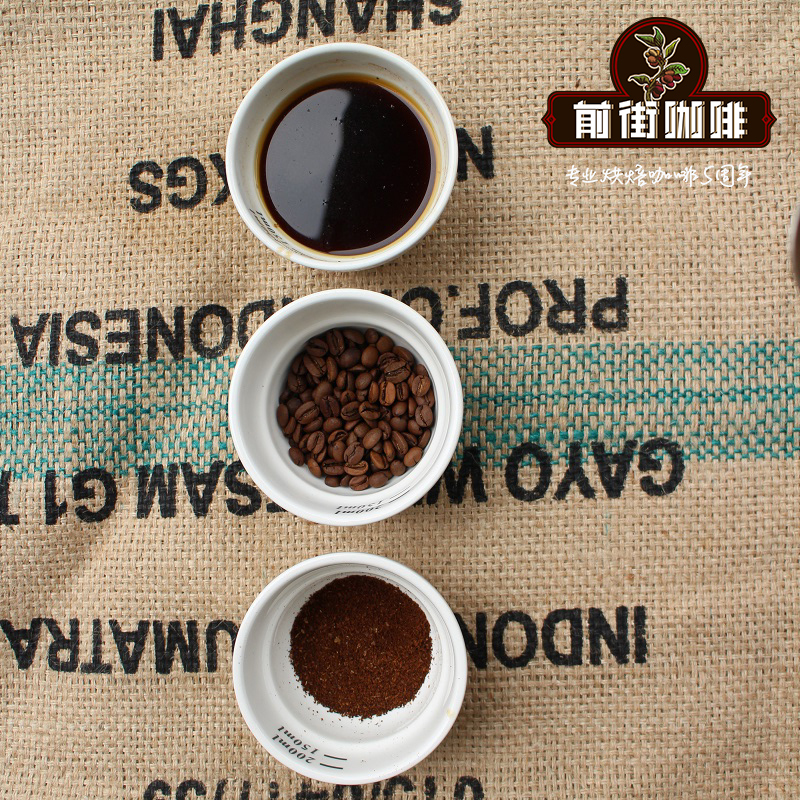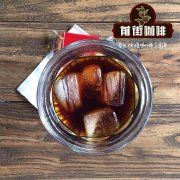Analysis on the aroma of coffee how to describe the aroma of coffee

Professional coffee knowledge exchange more coffee bean information please follow the coffee workshop (Wechat official account cafe_style)
The aroma of coffee comes from coffee roasting
The aroma and taste of coffee are produced after roasting. In the process of baking, the moisture of raw coffee beans is slowly released, the weight is reduced, the color deepens, the volume expands, and the aromatic oil is slowly released. In addition, a large amount of chlorogenic acid originally contained in raw beans will gradually disappear with the baking process, releasing good-smelling fruit acid, and its taste varies with the baking time. In the following picture, you can see the change in the shape of coffee beans during roasting.
We will elaborate on the details of roasting later. What you must know is that the special flavor of coffee is roasted, which is related to how to choose good coffee beans.
1. Flavor: the aroma, acidity and mellowness of a cup of coffee. Wait for the overall impression.
Second, Aroma (aroma): the taste of coffee after blending, describing the aroma of coffee including caramel, fruit, flower, full-bodied, spicy. Wait.
3. Bitter (bitter taste): one of the four tastes of coffee
4. Body (consistency): Body is also translated as mellow, but this translation is not accurate. It refers to the feeling of the thick and thick texture of the coffee after the entrance, and the tactile impression of the weight and quality of the coffee on the tongue. The consistency is described from the light as light as water, to the medium consistency of the thick soup and to the ultra-high fat like syrup.
Fifth, Acidity (acidity): refers to the taste distributed on the back of the tongue, which is not quite the same as citric acid, which makes people keep secreting saliva. The acidity of coffee is fresh, bright and bright. Arabica coffee beans at high altitude usually have acidity characteristics, while low altitude robusta beans lack this characteristic.
6. Sweet: describe the taste of coffee, which is even and delicious, flawless, perfectly coordinated and endless aftertaste. High-quality coffee usually exudes a sweet-to-sweet flavor.
7. Strong: describes the strong flavor of deep-roasted coffee beans, not coffee beans that contain a lot of caffeine. In fact, light canned coffee is high in caffeine because it contains a lot of robusta beans.
8. Tangy: describes coffee with a strong sour taste, with a strong sour taste between fruit acid and wine acid. Costa Rican coffee, which grows in the highlands, often has a pungent flavor.
9. Briny (salty taste): coffee beans will produce salty taste if they are overheated or because they are rich in minerals.
10. Winy (wine taste): it is similar to the comprehensive feeling of slightly alcoholic smell, good sour taste of water and even mellowness.
Important Notice :
前街咖啡 FrontStreet Coffee has moved to new addredd:
FrontStreet Coffee Address: 315,Donghua East Road,GuangZhou
Tel:020 38364473
- Prev

Exploration of Yunnan Coffee Manor Xinzhai Coffee Bean
Professional coffee knowledge exchange more coffee bean information please follow Coffee Workshop (Wechat official account cafe_style) Yunnan Xinzhai Coffee Manor Project is located in Lujiangba, Baoshan, Yunnan Province, which is recognized as the best small-grain coffee producing area in the world. Under the entrustment of the owners of the local coffee brand, it has renovated and built a group of open buildings on the wooded highlands, hoping to provide visitors with high quality.
- Next

Why is coffee sweet? What is sweetness?
Professional coffee knowledge exchange more coffee bean information please follow the coffee workshop (Wechat official account cafe_style) black coffee is bitter? That's in the past. Today's boutique coffee manufacturers and consumers will directly look for sweetness in black coffee. We are not talking about added sugar or honey here. But in the black coffee to drink the natural pure sweetness. Is that possible? But why would coffee
Related
- Beginners will see the "Coffee pull flower" guide!
- What is the difference between ice blog purified milk and ordinary milk coffee?
- Why is the Philippines the largest producer of crops in Liberia?
- For coffee extraction, should the fine powder be retained?
- How does extracted espresso fill pressed powder? How much strength does it take to press the powder?
- How to make jasmine cold extract coffee? Is the jasmine + latte good?
- Will this little toy really make the coffee taste better? How does Lily Drip affect coffee extraction?
- Will the action of slapping the filter cup also affect coffee extraction?
- What's the difference between powder-to-water ratio and powder-to-liquid ratio?
- What is the Ethiopian local species? What does it have to do with Heirloom native species?

